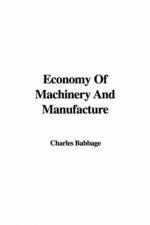About twenty years ago, the workmen, employed at a very extensive factory in forging these skelps out of bar-iron, ‘struck’ for an advance of wages; and as their demands were very exorbitant, they were not immediately complied with. In the meantime, the superintendent of the establishment directed his attention to the subject; and it occurred to him, that if the circumference of the rollers, between which the bar-iron was rolled, were to be made equal to the length of a skelp, or of a musket barrel, and if also the groove in which the iron was compressed, instead of being of the same width and depth throughout, were cut gradually deeper and wider from a point on the rollers, until it returned to the same point, then the bar-iron passing between such rollers, instead of being uniform in width and thickness, would have the form of a skelp. On making the trial, it was found to succeed perfectly; a great reduction of human labour was effected by the process, and the workmen who had acquired peculiar skill in performing it ceased to derive any advantage from their dexterity.
363. It is somewhat singular that another and a still more remarkable instance of the effect of combination amongst workmen, should have occurred but a few years since in the very same trade. The process of welding the skelps, so as to convert them into gun barrels, required much skill, and after the termination of the war, the demand for muskets having greatly diminished, the number of persons employed in making them was very much reduced. This circumstance rendered combination more easy; and upon one occasion, when a contract had been entered into for a considerable supply to be delivered on a fixed day, the men all struck for such an advance of wages as would have caused the completion of the contract to be attended with a very heavy loss.
In this difficulty, the contractors resorted to a mode of welding the gun barrel, for which a patent had been taken out by one of themselves some years before this event. The plan had not then succeeded so well as to come into general use, in consequence of the cheapness of the usual mode of welding by hand labour, combined with some other difficulties with which the patentee had to contend. But the stimulus produced by the combination of the workmen, induced him to make new trials, and he was enabled to introduce such a facility in welding gun barrels by rollers, and such perfection in the work itself, that, in all probability, very few will in future be welded by hand labour.
This new process consisted in folding a bar of iron, about a foot long, into the form of a cylinder, with the edges a little overlapping. It was then placed in a furnace, and being taken out when raised to a welding heat, a triblet, or cylinder of iron, was placed in it, and the whole was passed quickly through a pair of rollers. The effect of this was, that the welding was performed at a single heating, and the remainder of the elongation necessary for extending




